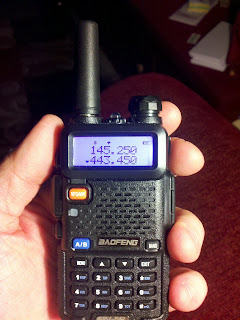
During a disaster, our ability to communicate with others becomes extremely important. Communication can take many forms, including telephones, fm radios, televisions, and so forth. With all the different communication options that exist, what form of communication is best during a disaster or emergency?
The short answer, is there is no answer. With so many different forms of communication out there, it is impossible to determine which communication medium will best serve your purpose. Cellular phones are one of the most current and prevalent forms of communication, and for good reason; They are reliable, capable of communicating anywhere in the country (or world for that matter), and portable. Cellular communication is going to be the primary form of communication with anyone, prepared or not, in a disaster. During Superstorm Sandy, in New York City and other parts of the country, businesses were allowing people to charge their phones with their power supplies so that people could communicate with the outside world. In a disaster, no matter how much preparing one does and how much money one spends on equipment, the cell phone is going to be the primary source of information.
Besides the cell phone, there is one item that I recommend that any disaster-conscious person purchase: a handheld amateur radio. These radios are capable of preforming multiple functions, and you can receive information from a WIDE variety of external sources. Amateur radios are capable of listening to NOAA weather bands, police and fire frequencies, amateur weather spotting frequencies, FRS (family radio service) frequencies, marine bands, and so on. An amateur radio is so versatile that I recommend everyone purchase one. To speak on an amateur radio requires a federal license, but with a little studying, these are easy to obtain and last 10 years. Even if you don't get an amateur radio license, you can still listen to communication, you simply cannot transmit. It is extremely beneficial to be able to listen to what is happening around you. Police bands will be able to tell you exactly what is happening in your neighborhood during a disaster. In an emergency, with no other means of communication, an unlicensed person is legally allowed to transmit an emergency call for help on an amateur radio, thus, owning one could saver your life.

The radio pictured above is a Baofeng UV-5R. It is OBVIOUSLY not American made, but this is a cheap, reliable radio that can be owned by anyone for $40 US Dollars. I have two of them, and carry one with me daily. The UV-5R's are amazingly versatile. They are equipped with FM radio, marine frequencies, NOAA weather frequencies, VHF and UHF frequencies which will allow you to listen to most local emergency responders, and they even have a flashlight feature. At this cost, anyone can purchase and own an amateur radio that they can use to listen to and communicate with. A radio similar to this should be a part of everyone's emergency disaster kit, and at $40, you should have one in the house, and in each vehicle you own.
Alternative forms of communication include CB radios, FRS radios, shortwave radios, televisions, etc. But I feel that none of these options have the versatility that you could have with an amateur radio, and I would highly recommend you keep one as a way to learn what is happening around you.







